Michael Dweck
The End: Montauk, N.Y. Portfolio No. 1-50
Limited to 50 numbered copies - The portfolio consists of ten 35.5 x 28 cm / 11 x 14 in photographs (nine gelatin silver and one chromogenic print). Each is signed, stamped, and numbered on its verso. Accompanied by a signed and numbered certificate of authenticity, each portfolio is housed in a handmade, clothbound clamshell box.
Released in conjunction with the expanded 10th anniversary edition of The End: Montauk, N.Y., this portfolio captures the spirit of Montauk as Michael Dweck found it in 2002. This was Dweck’s first major photographic work which tells a paradisiacal narrative about summer and youth, and blends idealism and documentation to reflect a place and a way of life both fading and being reinvented.
In 2003, this body of work was featured by Sotheby’s, New York, in its first solo show dedicated to a living photographer. The first portfolio that Dweck has released, it contains ten iconic prints featured in this unique photographic book, celebrated as “the ultimate homage to the sun-kissed life” by The New York Times.
Together, these alluring photographs convey his vision of Montauk’s essence—a collective portrait of place, culture, and people. The carefully composed images are neither purely documentary nor fiction, but share aspects of both. Focusing on a community of surfers, they tell a story offering both a reality of place and a fantasy of a paradise with unbounded possibilities. Dweck’s encounters in these photographs were with Montauk of a decade ago, but still promise a vision of endless youth, beauty, summer, and surf. “Montauk will never be Montauk again,” he reflects, “but it will never be anything else either.”
Limited to an edition of fifty, this portfolio is an exclusive collaboration between Michael Dweck and Keszler Gallery. Its release offers collectors the rare opportunity to own a collection of the most iconic images featured in The End: Montauk, N.Y., including David and Pam in their Caddy, Adriana at the Panoramic View, and Surf’s Up. The portfolio consists of ten 11” x 14” photographs (nine gelatin silver and one chromogenic print). Each is signed, stamped, and numbered on its verso. Accompanied by a signed and numbered certificate of authenticity, each portfolio is housed in a handmade, clothbound clamshell box.
A portion of the proceeds from the sale of The End: Montauk, N.Y. will go towards maintaining the waterways and beaches of Long Island and the U.S. through the Surfrider Foundation and Operation Splash.
Michael Dweck
The End: Montauk, N.Y.
by Christopher Sweet
Michael Dweck’s first major photographic work was published in volume form as The End: Montauk, N.Y., in 2004, and was featured in several exhibitions and art fairs that year. The work portrays the old fishing community of Montauk and its surfing subculture. It is an evocation of a real-world paradise lost: the paradise of summer, youth, and erotic possibility — an American version of the Arcadian vision. Blending nostalgia, fantasy, and documentation the photographs present a compelling portrait of a place in time and a way of life at once fading and being reinvented with each new season.
The signature photograph of the collection, Sonya, Poles, is an image of ecstaticsummer. A beautiful young woman in full naked glory — her blond hair blown back, her breasts aloft, a smile of anticipation — bounds across a glistening beach, a surfboard under her arm, toward the incoming waves. In the far distance — in the upper margin of the picture — waves and dunes, surf and scrub fringe the horizon line which divides her head from her body. Her face is profiled against the great sky, and her dynamic body against the flat expanse of wet sand. All the bliss of summer fun and youthful promise is summed up by her scissor kick, reiterated by her shadow and her reflection, a vivacious “v” form that becomes a faceted diamond cleaved from light. And that bolt of white, her surfboard, like a missile, will carve out the place on the wave that will bear her back over the beating tide like a goddess from the sea.
A tattered Old Glory flaps in the wind, an abandoned VW camper sits near theside of the road, beached like a dead whale, its former glory as a Love Bug long lost. Cars pull up in the parking lot near the beach. People slip out of their t-shirts and jeans and into bathing suits. The gear is unloaded. The tribe gathers. Aging sybarites ponder their past glories while oblivious, feckless youth in full flower frolics on the beach, cavorts in the water, sits out on the gentle swells waiting for waves, or makes mischief up at the motel or back at the cottage. Old timers measure the days, the years not by how far they have come, but how close they have remained and yet how much the place and they have changed, how much the weeds have grown up around them like the abandoned camper. An old surfboard, left under a house some twenty, thirty years before finds its original owner just down the road. At night the luau begins and the girls in grass skirts tease the men and boys. And the pleasures of the night beckon.
A few old timers show up, hang out, nowhere else to go, not part of the party butregulars on the scene. They add a little texture, lend a bit of character – like relics and artifacts – and are tolerated, at times perhaps indulged, as long as they don’t bother the girls. They serve as reminders that the past is not just the sound of receding trumpets. The years roll on like the tides, the seasons turn, and each summer brings its own story. With each new year, there is some new development, new blood, and more and more the hazard of new fortunes changing the balance and tone. New arrivals take it as they find it. Only the lifers, of one sort or another, bear the burden of how things ought to be, how things used to be.
Michael Dweck’s The End: Montauk, N.Y., is a private Idaho, a personal Eden, atonce remembered and imagined. The Arcadian setting is a place for recreation, self-invention, and the celebration of physical beauty and well-being and the tender temptations of the flesh. It is a down-home beach paradise of a distinctly American variety, Endless Summer, that blessed but all too brief interlude that separates the seasons of school and work, adolescence and adulthood. Dweck’s vision of the far end of the island mingles the yearnings and anxieties of youth and age, of callowness and conscience, the exuberance of one’s salad days and the frisson of old bachelors. The season in the sun in due course passes into autumn. Youth and beauty blush, exude their sweetness, exert their power, but inevitably falter and fade before the onslaught of the years under the overarching, ozone-depleted sky. Our times are not in our hands. The eviction notice is tied to the gate, even as one enters, and the unease of that knowledge hovers over the good fun. The golden youth of one summer is the worldly-wise veteran or the broken old timer of another. The End is an elegy to the evanescence of youth and an ode to the consolation of art.
The End: Montauk, N.Y. Portfolio
- The portfolio includes ten, 11” x 14” photographs (nine gelatin silver prints + one chromogenic print)
- Includes the following gelatin silver prints – David and Pam in their Caddy, Surf’s Up, Jessica Lounging, Ditch Plains Surf Contest, Adriana at the Panoramic View, Lilla, Boards, Shadmoor Cliffs, Jamie Leigh and Beach Dog which is a chromogenic print.
- Each photograph is signed, stamped and numbered on the verso, accompanied by a signed and numbered certificate of authenticity and encased in a handmade, clothbound clamshell box
- Limited edition of 50
- Published by Ditch Plains Press
- • Limited to 50 copies
- • Release date: 2016
- • Photographs printed in the United States.
- • Oversize clothbound clamshell box 31.7 x 39.4 x 5.7 cm. (12.5 x 15.5 x 2.25 in.) fabricated in Japan.
- ISBN 978-0-9818465-1-4
The gelatin silver prints are selenium toned which produces exquisite tonal range and density. The chromogenic print is reproduced in the finest technique available today, which provides unequalled intensity and color range.
About Michael Dweck
With a keen eye for the formal qualities of his subjects, and sensitivity to the particularities of place and community, Michael Dweck uses his camera to engage with the visual world. After an award-winning career as a creative director, he left commercial work in 2001 to pursue his passion for photography full-time. He works in color and black-and-white, and always in narrative series; “each photograph stands on its own but also contributes to a larger spirit that informs the body’s overarching narrative,” he explains. His subject matter ranges from cars and architecture to landscapes and female nudes. Among Dweck’s best-known series are “The End: Montauk, N.Y.” (2004), in which he blends nostalgia, fantasy, and documentation to capture Montauk’s old fishing community and its surfing subculture, Mermaids (2008), where through abstract images, Dweck weaved a tale inspired equally by mermaid lure, the feminine form, and the meditative, lonely lives he saw below the surface. and “Habana Libre” (2011), an unprecedented, intimate portrayal of Cuba’s privileged creative class.
His photographs were first showcased at Sotheby’s, New York, in 2003, in the auction house’s first solo exhibition of a living photographer. Dweck’s provocative and topical work has since become part of important international art collections and has been the subject of solo exhibitions throughout the world, from New York, San Francisco and Toronto to Paris, Belgium, and Tokyo. Two of Dweck’s long form TV pieces are part of the permanent collection of the Museum of Modern Art.
Dweck’s aesthetic and cultural reflections are largely informed by his childhood in Long Island, New York, and the profound sense of place and community the setting instilled in him. His work - though often ethereal, mature and playful - reflects larger geographic and social connections, and often pays homage to subcultures, specifically those in flux and threatened with extinction. In these idealized portraits, Dweck aims to contrast fantasy and reality, past and present, and preserve what remains of specific social enclaves, niches and movements.
Dweck recently finished his first film, Blunderbust. What started as a photographic exploration of the titular class of race cars, quickly grew into a full-length feature about another endangered subculture: that of the individuals who drive the cars, and a commercially-threatened community that clings to Long Island’s last racetrack. At once both a personal homage and a metaphor for the commercialization of the American landscape, Blunderbust is the story of a small-town American racetrack fighting for survival when land-hungry corporations come to town. Concurrent to the film will be an exhibition of a widely ambitious mélange of sculpture, installation, abstract painting and contextual film.
“the ultimate homage to the sun-kissed surfing life…”
– New York Times

Includes ten photographs
(nine gelatin silver and one chromogenic print). Each signed,
stamped, and numbered on its verso.
35.5 x 28 cm / 11 x 14 in
(paper size)
(Frame not included)

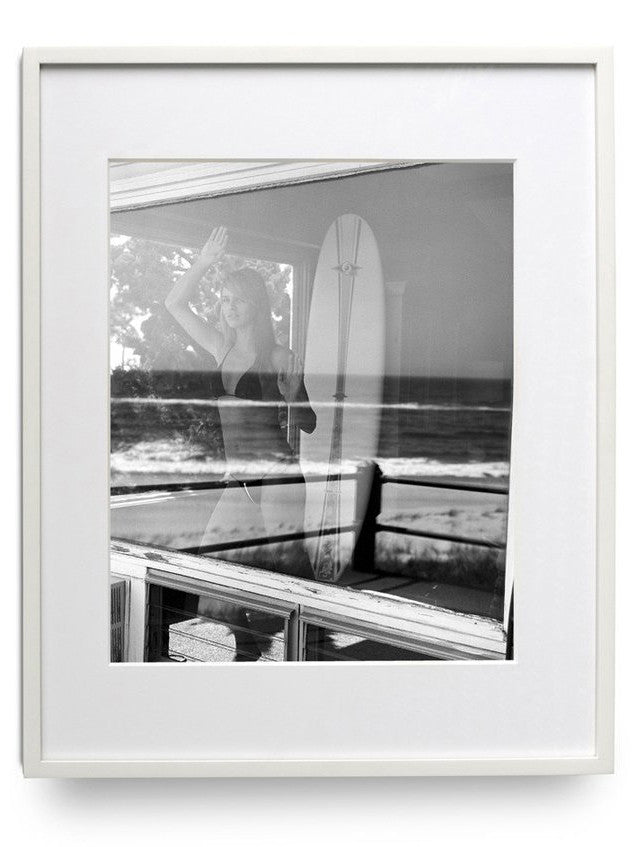




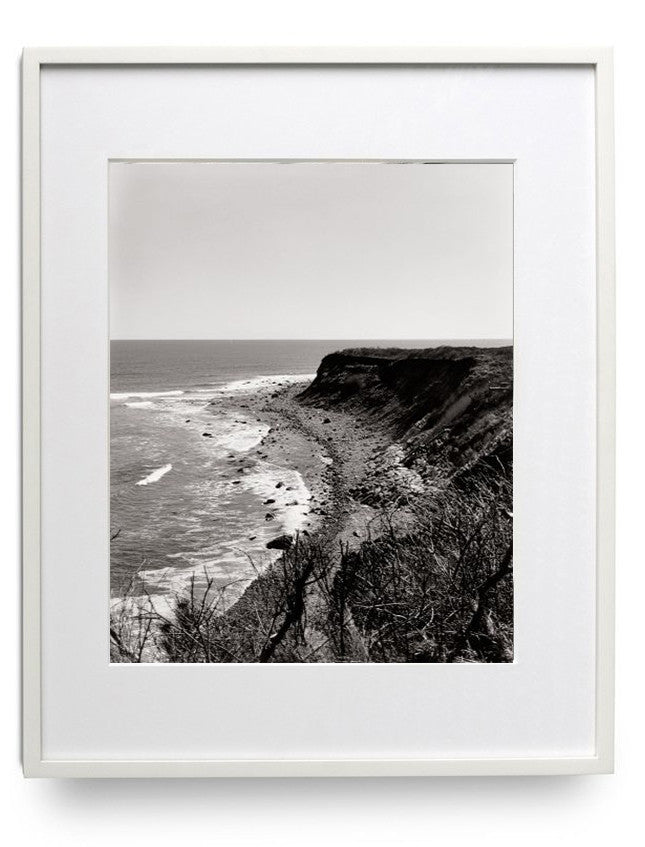





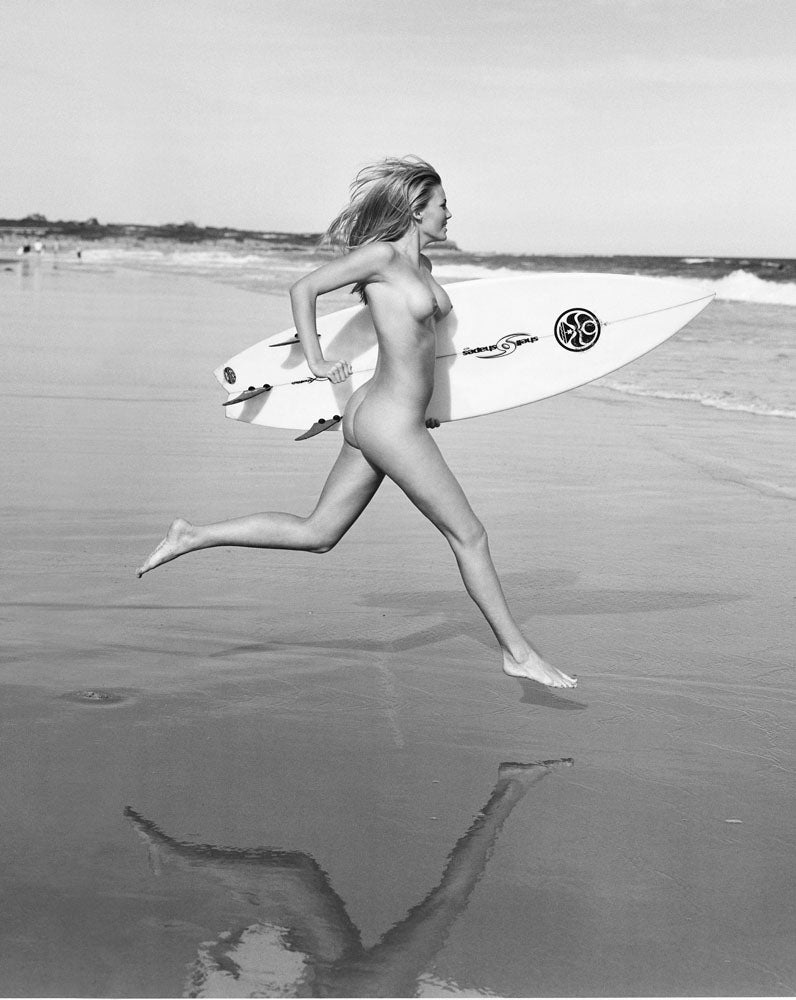 Flag at Snug Harbor, Montauk 2002
Flag at Snug Harbor, Montauk 2002  Adriana at The Panoramic View, Montauk 2002
Adriana at The Panoramic View, Montauk 2002  Surf’s Up, Montauk 2006
Surf’s Up, Montauk 2006  Lilla, Nappeague 2002
Lilla, Nappeague 2002  Old Boards at Tony’s House
Old Boards at Tony’s House  Surfing at Ditch Plains, Montauk 2002
Surfing at Ditch Plains, Montauk 2002  Ray, Montauk 2002
Ray, Montauk 2002  Morning surf at Poles, Montauk 2012
Morning surf at Poles, Montauk 2012  Jessica and Kurt, Montauk 2002
Jessica and Kurt, Montauk 2002  Getting wet, Cavett’s Cove Montauk 2006
Getting wet, Cavett’s Cove Montauk 2006  Laying out, Montauk 2012
Laying out, Montauk 2012  Lilla, Nappeague 2002
Lilla, Nappeague 2002  Wave after the storm, Montauk 2009
Wave after the storm, Montauk 2009  Cooling off, Turtle Cove, Montauk 2012
Cooling off, Turtle Cove, Montauk 2012  Julia and Brittany, Hither Hills/Apres surf, Montauk 2012
Julia and Brittany, Hither Hills/Apres surf, Montauk 2012  Lilla, Nappeague 2002
Lilla, Nappeague 2002  Natalie on the Rocks, Camp Hero, Montauk 2008
Natalie on the Rocks, Camp Hero, Montauk 2008  Surfing Air Force Base, Montauk 2013
Surfing Air Force Base, Montauk 2013 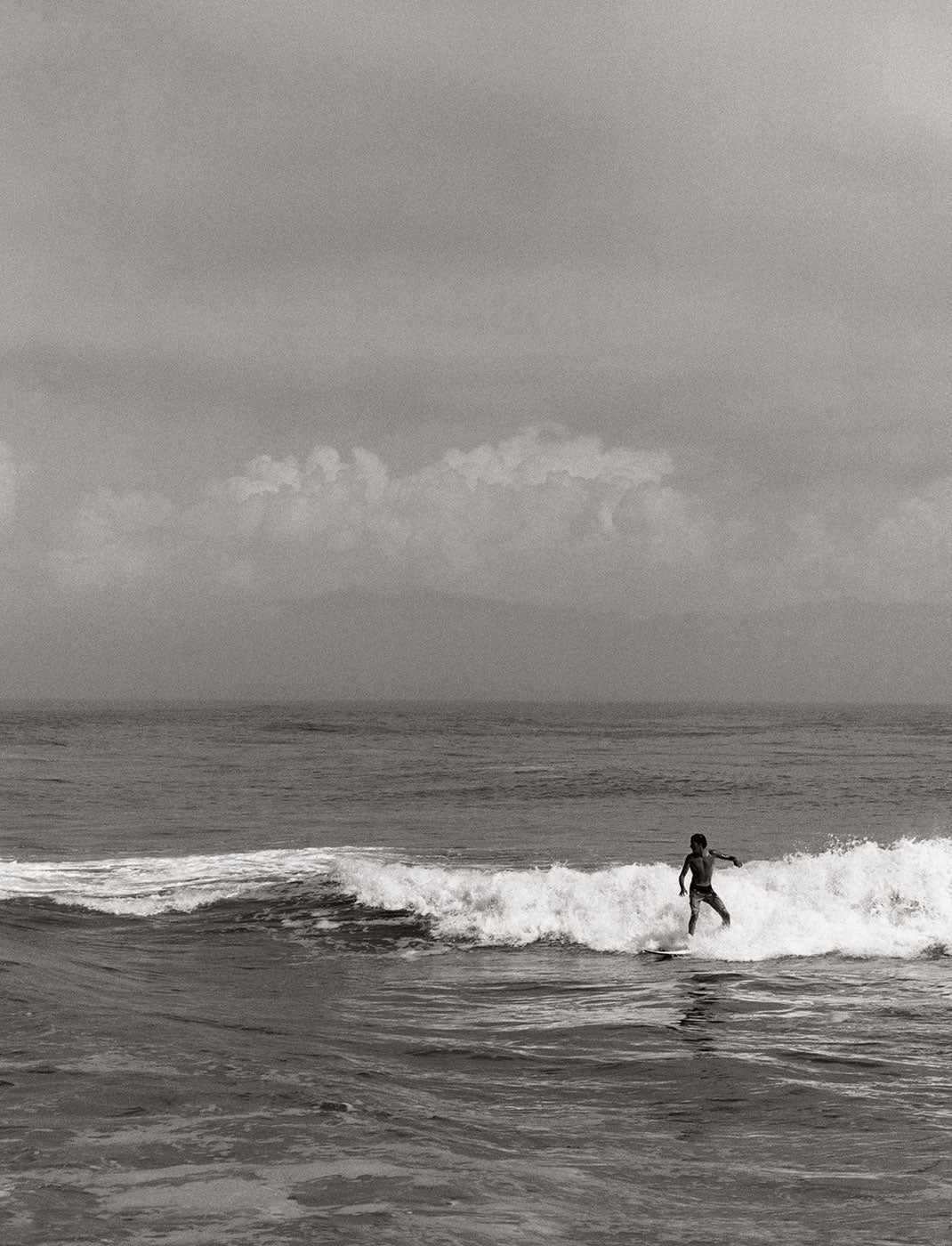 Calm Before the Storm, Montauk 2008
Calm Before the Storm, Montauk 2008  Poster from the Sotheby’s exhibition 2003
Poster from the Sotheby’s exhibition 2003  Sotheby’s exhibition 2003
Sotheby’s exhibition 2003  Sotheby’s exhibition 2003
Sotheby’s exhibition 2003  Sotheby’s exhibition installation 2003
Sotheby’s exhibition installation 2003  Sotheby’s exhibition 2003
Sotheby’s exhibition 2003  Staley Wise exhibition 2012
Staley Wise exhibition 2012  Staley Wise exhibition 2012
Staley Wise exhibition 2012 
Michael Dweck The End: Montauk, N.Y
In the 1960s, the fishing village of Montauk became the surfer's paradise of the United States' East Coast. Located as the tip of Long Island's South Fork, the easternmost point of the Hamptons, this paradise existed primarily for locals - not surfers who migrated to the beach for the summer, but those who were out in the rocky reefs every day, year round. Today, a new tribe of surfers exists - a group of young locals who live by their own rules. Rule number 1: Never tell anyone where the good surf spots are. Rule number 2: See rule number 1. In the 1990s, photographer Michael Dweck rented a house on Ditch Plains beach (site of the best surf break) and struck up a friendship with one of the local surfers, eventually gaining uprecedented access to the insular local surf community. Dweck's photographic essay follows the surfers through their daily rituals, from early morning wave reports to evening bonfires on the beach, capturing their youthful hedonism. Through portraits, nudes, and photographs of the landscape, this book celebrates lives lived only to surf, and captures an endless summer of perfect weather and languorous beauty.

Michael Dweck
Summer, 1975. I was seventeen and living with my family on Long Island when I heard the rumor that the Rolling Stones were recording an album at Andy Warhol’s place in Montauk. My friend Oscar and I packed up our instruments in his ‘71 Plymouth Valiant and headed for Montauk and, we were convinced, rock-and-roll history. We possessed the keys to a house belonging to the parents of someone my brother was dating and a belief in our own greatness completely disproportionate to our talents. We found the house at about two in the morning and immediately began playing as loud as we could with the doors and windows open. At this point, I might mention that our instruments were a slide trombone and a drum set. Needless to say, Mick, Keith, Charlie, and Ron didn’t take notice—but the neighbors sure did. We spent the next two days in an almost constant state of motion, driving from one end of the little fishing community to the next. While we never jammed with, or even saw the Stones (“You should have been here last night, they played for two hours right on that stage there,”) we did discover a place that seemed far removed from suburban civilian. The beaches were unspoiled, there was real surfing going on, and the girls looked, well, like they didn’t belong on Long Island.
I returned to Montauk many times, sometimes alone, sometimes with friends. More than once, I came with my parents. Always, I was the outsider. It wasn’t that the locals were mean (although some were). They just had a good thing going and they weren’t keen on sharing it with the whole world. Montauk was, and is, a fishing town that’s fighting to keep from becoming the next Hamptons, the next Fire Island, the next fill-in-the-blank. It’s 100 miles from Manhattan yet almost no one locks their doors and the taco stand extends credit. Everyone knows the freewheeling vibe can’t last; they’re just determined that it won’t disappear on their watch.
It was the desire to record something before it faded away that was the catalyst for this project. These images were supposed to chronicle one two-week period in the life of the town but it took me two weeks to realize I didn’t want to be constrained by any self-imposed rules (rules not being what Montauk is about). Two weeks turned into a summer. I focused on the subjects I was most interested in, the surfers. By and large, these are kids who are the same age I was when I first fell in love with the place. They are beautiful and sexy and tribal in a way no one who hasn’t been part of a surf community can understand. I can tell myself that I knew Montauk when it was better, when the beaches were less crowded and the summer crush could barely fill the two roadside motels. I can’t delude myself into thinking that I ever surfed as well, looked as good, or partied as hard as the young people who let me take their pictures. If the crew at Ditch were bitter over missing the Rolling Stones or Andy Warhol, they sure didn’t show it.
When I go to Montauk now, it’s often in the company of my wife and two children. My wife and daughter are already surfing and my son, I don’t doubt, will be graduating from his boogie board soon. What will the place look like when they’re old enough to chase a rock band or fall in love with someone they see peeling off a wetsuit in the parking lot? Now that I’ve been coming here long enough that I no longer worry about my car being vandalized if I surf at one of the hidden breaks, I don’t want any outsiders arriving with notions of building big houses, opening a real hotel or, heaven forbid, paving any more roads. I don’t want anyone coming to Montauk who I don’t know. Period.
It’s always been my hope that the men and women who let me take their pictures see this book and think that I’ve paid them and their town a high compliment. But if my book, even in some small way, hastens the demise of the lifestyle it seeks to glorify, then I’ve shot myself in the foot. It’s taken me 28 years just to get some of the residents of Montauk to say hello to me. If they believe that I’ve brought the whole world down on them, I’ll have to start parking under streetlights again. And there are damn few streetlights in Montauk.
That’s the way it always goes, isn’t it? Everyone who makes it to the fallout shelter tries to bolt the door behind him. It’s like some graffiti I read in the stall at the Shagwong Tavern. “Welcome to Montauk. Take a picture and get the f--- out.”
Here are my pictures. Please, please stay away just a little longer.
Rusty Drumm
From the vantage of the 2002 wave-crowded summer season, it's difficult to recall the pure, undiluted stoke that we who pioneered surfing in Montauk felt in the 1960s.
The waves here were far better than those we had known to the west on Long Island, although a few of us were lucky enough to have experienced Hawaiian and Californian juice. The stoke had to do with the waves, yes, but it was much more about the untrammeled nature that surrounded us on land and in the waves.
We take for granted a truth that, though shared with other places in the country, is truer on Long Island. The truth is that people are like seals. When too many of them have to share the same rock, a number of them move away. On Long Island, the path of flight is west-to-east away from New York City. I make this observation in order to explain why Montauk, on the very end of the South Fork of Long Island, 120 (which is correct? you say 100 in your essay) miles east of Manhattan, was considered remote even back in the 1960s. Simply put, claustrophobic people did not have to travel so far in 1965 to escape their panic, and the roads of escape were not as straight.
For those of us who were in our late teens, early 20s, Montauk was like the lost world. We camped where we wanted to, built roaring beach fires, drank beer, smoked nature, and surfed waves with nobody else on them. This was long before the saloons were gentrified. The Shagwong Tavern was a fishermen’s bar, like all the others, with pool tables, fish mounts on their walls, and photos of big sharks and tuna, as well as the captains and anglers that have made Montauk the "Fishing capitol of the World." Fitzgeralds down on the docks still had spitoons on the floor. Frank Mundus, the "Monster Man," was in his heyday, the nails of his big toes painted green and red for port and starboard, bringing gigantic white sharks back from offshore.
Many of us tented in the Ditch Plains trailer park for something like $25 a week. Allan Weisbecker had a waterbed outside his tent that heated up during the day, perfect for when the sun went down. Roland Eisenberg and I lived in a cabin we called "Casa Non-Movita" because it sat next to a trailer named the "Casa Movita." Sam Slomon, an interior decorator from the city, had a trailer plot he called "Samalot," where he entertained surfers and their girlfriends, feeding us well, and performing Swan Lake or the Dance of the Seven Veils after dinner. You had to be there. I remember my ensemble at one of Sam's very late night soirées consisted of a wetsuit, dinner jacket, and top hat. You get the picture. Michael Cochran was a "pearl diver," that is, a dishwasher at a local restaurant. We worked in restaurants, bars, for contractors, and those of us who had begun (without knowing it) lifelong careers as commercial fishermen by clamming back west, got jobs crewing on fishing boats.
The jobs supported our habit, which was surfing, and Montauk's unique geology supported the surf. Unlike most of the East Coast, Montauk's surf breaks on rock reefs, and the swells come out of deep water, unslowed by the drag of gradual slope of sand banks. Spots like Turtle Cove, The Ranch, Cavett's Cove, and Air Force Base, produce world-class waves when visited by swells generated by tropical storms. We knew when the swell hit in the night because Montauk's morainal boulders and cobblestones would begin to growl as the pull and push of a distant storm moved them about.
A few surfers were already here. The late Bob Akin, his brother Bill, Bob Aaron, who just died, Gene DePasquale and his young sons. The rest of us made our way slowly, making jobs where none existed in order to stay in close proximity to Montauk’s waves and overall beauty. We have passed surf fever on to our kids—a new tribe of young surf rats claiming its own section of beach each year. We put up with the hordes that make their summer migration to our home knowing that in early spring and late fall, when hurricane swells make secret spots come alive, we will be reunited with the dream that brought us here in the fist place.

Michael Dweck
The End: Montauk, N.Y. Portfolio No. 1-50
Limited to 50 numbered copies - The portfolio consists of ten 35.5 x 28 cm / 11 x 14 in photographs (nine gelatin silver and one chromogenic print). Each is signed, stamped, and numbered on its verso. Accompanied by a signed and numbered certificate of authenticity, each portfolio is housed in a handmade, clothbound clamshell box.
Released in conjunction with the expanded 10th anniversary edition of The End: Montauk, N.Y., this portfolio captures the spirit of Montauk as Michael Dweck found it in 2002. This was Dweck’s first major photographic work which tells a paradisiacal narrative about summer and youth, and blends idealism and documentation to reflect a place and a way of life both fading and being reinvented.
In 2003, this body of work was featured by Sotheby’s, New York, in its first solo show dedicated to a living photographer. The first portfolio that Dweck has released, it contains ten iconic prints featured in this unique photographic book, celebrated as “the ultimate homage to the sun-kissed life” by The New York Times.
Together, these alluring photographs convey his vision of Montauk’s essence—a collective portrait of place, culture, and people. The carefully composed images are neither purely documentary nor fiction, but share aspects of both. Focusing on a community of surfers, they tell a story offering both a reality of place and a fantasy of a paradise with unbounded possibilities. Dweck’s encounters in these photographs were with Montauk of a decade ago, but still promise a vision of endless youth, beauty, summer, and surf. “Montauk will never be Montauk again,” he reflects, “but it will never be anything else either.”
Limited to an edition of fifty, this portfolio is an exclusive collaboration between Michael Dweck and Keszler Gallery. Its release offers collectors the rare opportunity to own a collection of the most iconic images featured in The End: Montauk, N.Y., including David and Pam in their Caddy, Adriana at the Panoramic View, and Surf’s Up. The portfolio consists of ten 11” x 14” photographs (nine gelatin silver and one chromogenic print). Each is signed, stamped, and numbered on its verso. Accompanied by a signed and numbered certificate of authenticity, each portfolio is housed in a handmade, clothbound clamshell box.
A portion of the proceeds from the sale of The End: Montauk, N.Y. will go towards maintaining the waterways and beaches of Long Island and the U.S. through the Surfrider Foundation and Operation Splash.
Michael Dweck
The End: Montauk, N.Y.
by Christopher Sweet
Michael Dweck’s first major photographic work was published in volume form as The End: Montauk, N.Y., in 2004, and was featured in several exhibitions and art fairs that year. The work portrays the old fishing community of Montauk and its surfing subculture. It is an evocation of a real-world paradise lost: the paradise of summer, youth, and erotic possibility — an American version of the Arcadian vision. Blending nostalgia, fantasy, and documentation the photographs present a compelling portrait of a place in time and a way of life at once fading and being reinvented with each new season.
The signature photograph of the collection, Sonya, Poles, is an image of ecstaticsummer. A beautiful young woman in full naked glory — her blond hair blown back, her breasts aloft, a smile of anticipation — bounds across a glistening beach, a surfboard under her arm, toward the incoming waves. In the far distance — in the upper margin of the picture — waves and dunes, surf and scrub fringe the horizon line which divides her head from her body. Her face is profiled against the great sky, and her dynamic body against the flat expanse of wet sand. All the bliss of summer fun and youthful promise is summed up by her scissor kick, reiterated by her shadow and her reflection, a vivacious “v” form that becomes a faceted diamond cleaved from light. And that bolt of white, her surfboard, like a missile, will carve out the place on the wave that will bear her back over the beating tide like a goddess from the sea.
A tattered Old Glory flaps in the wind, an abandoned VW camper sits near theside of the road, beached like a dead whale, its former glory as a Love Bug long lost. Cars pull up in the parking lot near the beach. People slip out of their t-shirts and jeans and into bathing suits. The gear is unloaded. The tribe gathers. Aging sybarites ponder their past glories while oblivious, feckless youth in full flower frolics on the beach, cavorts in the water, sits out on the gentle swells waiting for waves, or makes mischief up at the motel or back at the cottage. Old timers measure the days, the years not by how far they have come, but how close they have remained and yet how much the place and they have changed, how much the weeds have grown up around them like the abandoned camper. An old surfboard, left under a house some twenty, thirty years before finds its original owner just down the road. At night the luau begins and the girls in grass skirts tease the men and boys. And the pleasures of the night beckon.
A few old timers show up, hang out, nowhere else to go, not part of the party butregulars on the scene. They add a little texture, lend a bit of character – like relics and artifacts – and are tolerated, at times perhaps indulged, as long as they don’t bother the girls. They serve as reminders that the past is not just the sound of receding trumpets. The years roll on like the tides, the seasons turn, and each summer brings its own story. With each new year, there is some new development, new blood, and more and more the hazard of new fortunes changing the balance and tone. New arrivals take it as they find it. Only the lifers, of one sort or another, bear the burden of how things ought to be, how things used to be.
Michael Dweck’s The End: Montauk, N.Y., is a private Idaho, a personal Eden, atonce remembered and imagined. The Arcadian setting is a place for recreation, self-invention, and the celebration of physical beauty and well-being and the tender temptations of the flesh. It is a down-home beach paradise of a distinctly American variety, Endless Summer, that blessed but all too brief interlude that separates the seasons of school and work, adolescence and adulthood. Dweck’s vision of the far end of the island mingles the yearnings and anxieties of youth and age, of callowness and conscience, the exuberance of one’s salad days and the frisson of old bachelors. The season in the sun in due course passes into autumn. Youth and beauty blush, exude their sweetness, exert their power, but inevitably falter and fade before the onslaught of the years under the overarching, ozone-depleted sky. Our times are not in our hands. The eviction notice is tied to the gate, even as one enters, and the unease of that knowledge hovers over the good fun. The golden youth of one summer is the worldly-wise veteran or the broken old timer of another. The End is an elegy to the evanescence of youth and an ode to the consolation of art.
The End: Montauk, N.Y. Portfolio
- The portfolio includes ten, 11” x 14” photographs (nine gelatin silver prints + one chromogenic print)
- Includes the following gelatin silver prints – David and Pam in their Caddy, Surf’s Up, Jessica Lounging, Ditch Plains Surf Contest, Adriana at the Panoramic View, Lilla, Boards, Shadmoor Cliffs, Jamie Leigh and Beach Dog which is a chromogenic print.
- Each photograph is signed, stamped and numbered on the verso, accompanied by a signed and numbered certificate of authenticity and encased in a handmade, clothbound clamshell box
- Limited edition of 50
- Published by Ditch Plains Press
- • Limited to 50 copies
- • Release date: 2016
- • Photographs printed in the United States.
- • Oversize clothbound clamshell box 31.7 x 39.4 x 5.7 cm. (12.5 x 15.5 x 2.25 in.) fabricated in Japan.
- ISBN 978-0-9818465-1-4
The gelatin silver prints are selenium toned which produces exquisite tonal range and density. The chromogenic print is reproduced in the finest technique available today, which provides unequalled intensity and color range.
About Michael Dweck
With a keen eye for the formal qualities of his subjects, and sensitivity to the particularities of place and community, Michael Dweck uses his camera to engage with the visual world. After an award-winning career as a creative director, he left commercial work in 2001 to pursue his passion for photography full-time. He works in color and black-and-white, and always in narrative series; “each photograph stands on its own but also contributes to a larger spirit that informs the body’s overarching narrative,” he explains. His subject matter ranges from cars and architecture to landscapes and female nudes. Among Dweck’s best-known series are “The End: Montauk, N.Y.” (2004), in which he blends nostalgia, fantasy, and documentation to capture Montauk’s old fishing community and its surfing subculture, Mermaids (2008), where through abstract images, Dweck weaved a tale inspired equally by mermaid lure, the feminine form, and the meditative, lonely lives he saw below the surface. and “Habana Libre” (2011), an unprecedented, intimate portrayal of Cuba’s privileged creative class.
His photographs were first showcased at Sotheby’s, New York, in 2003, in the auction house’s first solo exhibition of a living photographer. Dweck’s provocative and topical work has since become part of important international art collections and has been the subject of solo exhibitions throughout the world, from New York, San Francisco and Toronto to Paris, Belgium, and Tokyo. Two of Dweck’s long form TV pieces are part of the permanent collection of the Museum of Modern Art.
Dweck’s aesthetic and cultural reflections are largely informed by his childhood in Long Island, New York, and the profound sense of place and community the setting instilled in him. His work - though often ethereal, mature and playful - reflects larger geographic and social connections, and often pays homage to subcultures, specifically those in flux and threatened with extinction. In these idealized portraits, Dweck aims to contrast fantasy and reality, past and present, and preserve what remains of specific social enclaves, niches and movements.
Dweck recently finished his first film, Blunderbust. What started as a photographic exploration of the titular class of race cars, quickly grew into a full-length feature about another endangered subculture: that of the individuals who drive the cars, and a commercially-threatened community that clings to Long Island’s last racetrack. At once both a personal homage and a metaphor for the commercialization of the American landscape, Blunderbust is the story of a small-town American racetrack fighting for survival when land-hungry corporations come to town. Concurrent to the film will be an exhibition of a widely ambitious mélange of sculpture, installation, abstract painting and contextual film.
“the ultimate homage to the sun-kissed surfing life…”
– New York Times

Includes ten photographs
(nine gelatin silver and one chromogenic print). Each signed,
stamped, and numbered on its verso.
35.5 x 28 cm / 11 x 14 in
(paper size)
(Frame not included)
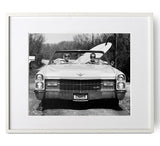
Montauk, 2002
Gelatin silver print
stamped, and numbered on its verso.
Signed, stamped, and numbered on its verso.
35.5 x 28 cm / 11 x 14 in (paper size)
(Frame not included)

Montauk, 2002
Gelatin silver print
stamped, and numbered on its verso.
Signed, stamped, and numbered on its verso.
35.5 x 28 cm / 11 x 14 in (paper size)
(Frame not included)
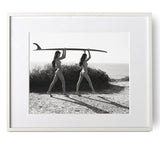
Montauk, 2006
Gelatin silver print
stamped, and numbered on its verso.
Signed, stamped, and numbered on its verso.
35.5 x 28 cm / 11 x 14 in (paper size)
(Frame not included)
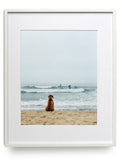
Montauk, 2002
Chromogenic print
stamped, and numbered on its verso.
Signed, stamped, and numbered on its verso.
35.5 x 28 cm / 11 x 14 in (paper size)
(Frame not included)

Montauk, 2002
Gelatin silver print
stamped, and numbered on its verso.
Signed, stamped, and numbered on its verso.
35.5 x 28 cm / 11 x 14 in (paper size)
(Frame not included)

Montauk, 2002
Gelatin silver print
stamped, and numbered on its verso.
Signed, stamped, and numbered on its verso.
35.5 x 28 cm / 11 x 14 in (paper size)
(Frame not included)

Montauk, 2002
Gelatin silver print
stamped, and numbered on its verso.
Signed, stamped, and numbered on its verso.
35.5 x 28 cm / 11 x 14 in (paper size)
(Frame not included)

Montauk, 2002
Gelatin silver print
stamped, and numbered on its verso.
Signed, stamped, and numbered on its verso.
35.5 x 28 cm / 11 x 14 in (paper size)
(Frame not included)
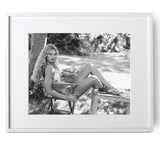
Montauk, 2002
Gelatin silver print
stamped, and numbered on its verso.
Signed, stamped, and numbered on its verso.
35.5 x 28 cm / 11 x 14 in (paper size)
(Frame not included)
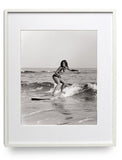
Montauk, 2006
Gelatin silver print
stamped, and numbered on its verso.
Signed, stamped, and numbered on its verso.
35.5 x 28 cm / 11 x 14 in (paper size)
(Frame not included)

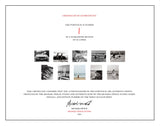
 Flag at Snug Harbor, Montauk 2002
Flag at Snug Harbor, Montauk 2002  Adriana at The Panoramic View, Montauk 2002
Adriana at The Panoramic View, Montauk 2002  Surf’s Up, Montauk 2006
Surf’s Up, Montauk 2006  Lilla, Nappeague 2002
Lilla, Nappeague 2002  Old Boards at Tony’s House
Old Boards at Tony’s House  Surfing at Ditch Plains, Montauk 2002
Surfing at Ditch Plains, Montauk 2002  Ray, Montauk 2002
Ray, Montauk 2002  Morning surf at Poles, Montauk 2012
Morning surf at Poles, Montauk 2012  Jessica and Kurt, Montauk 2002
Jessica and Kurt, Montauk 2002  Getting wet, Cavett’s Cove Montauk 2006
Getting wet, Cavett’s Cove Montauk 2006  Laying out, Montauk 2012
Laying out, Montauk 2012  Lilla, Nappeague 2002
Lilla, Nappeague 2002  Wave after the storm, Montauk 2009
Wave after the storm, Montauk 2009  Cooling off, Turtle Cove, Montauk 2012
Cooling off, Turtle Cove, Montauk 2012  Julia and Brittany, Hither Hills/Apres surf, Montauk 2012
Julia and Brittany, Hither Hills/Apres surf, Montauk 2012  Lilla, Nappeague 2002
Lilla, Nappeague 2002  Natalie on the Rocks, Camp Hero, Montauk 2008
Natalie on the Rocks, Camp Hero, Montauk 2008  Surfing Air Force Base, Montauk 2013
Surfing Air Force Base, Montauk 2013  Calm Before the Storm, Montauk 2008
Calm Before the Storm, Montauk 2008  Poster from the Sotheby’s exhibition 2003
Poster from the Sotheby’s exhibition 2003  Sotheby’s exhibition 2003
Sotheby’s exhibition 2003  Sotheby’s exhibition 2003
Sotheby’s exhibition 2003  Sotheby’s exhibition installation 2003
Sotheby’s exhibition installation 2003  Sotheby’s exhibition 2003
Sotheby’s exhibition 2003  Staley Wise exhibition 2012
Staley Wise exhibition 2012  Staley Wise exhibition 2012
Staley Wise exhibition 2012 
Michael Dweck The End: Montauk, N.Y
In the 1960s, the fishing village of Montauk became the surfer's paradise of the United States' East Coast. Located as the tip of Long Island's South Fork, the easternmost point of the Hamptons, this paradise existed primarily for locals - not surfers who migrated to the beach for the summer, but those who were out in the rocky reefs every day, year round. Today, a new tribe of surfers exists - a group of young locals who live by their own rules. Rule number 1: Never tell anyone where the good surf spots are. Rule number 2: See rule number 1. In the 1990s, photographer Michael Dweck rented a house on Ditch Plains beach (site of the best surf break) and struck up a friendship with one of the local surfers, eventually gaining uprecedented access to the insular local surf community. Dweck's photographic essay follows the surfers through their daily rituals, from early morning wave reports to evening bonfires on the beach, capturing their youthful hedonism. Through portraits, nudes, and photographs of the landscape, this book celebrates lives lived only to surf, and captures an endless summer of perfect weather and languorous beauty.

Michael Dweck
Summer, 1975. I was seventeen and living with my family on Long Island when I heard the rumor that the Rolling Stones were recording an album at Andy Warhol’s place in Montauk. My friend Oscar and I packed up our instruments in his ‘71 Plymouth Valiant and headed for Montauk and, we were convinced, rock-and-roll history. We possessed the keys to a house belonging to the parents of someone my brother was dating and a belief in our own greatness completely disproportionate to our talents. We found the house at about two in the morning and immediately began playing as loud as we could with the doors and windows open. At this point, I might mention that our instruments were a slide trombone and a drum set. Needless to say, Mick, Keith, Charlie, and Ron didn’t take notice—but the neighbors sure did. We spent the next two days in an almost constant state of motion, driving from one end of the little fishing community to the next. While we never jammed with, or even saw the Stones (“You should have been here last night, they played for two hours right on that stage there,”) we did discover a place that seemed far removed from suburban civilian. The beaches were unspoiled, there was real surfing going on, and the girls looked, well, like they didn’t belong on Long Island.
I returned to Montauk many times, sometimes alone, sometimes with friends. More than once, I came with my parents. Always, I was the outsider. It wasn’t that the locals were mean (although some were). They just had a good thing going and they weren’t keen on sharing it with the whole world. Montauk was, and is, a fishing town that’s fighting to keep from becoming the next Hamptons, the next Fire Island, the next fill-in-the-blank. It’s 100 miles from Manhattan yet almost no one locks their doors and the taco stand extends credit. Everyone knows the freewheeling vibe can’t last; they’re just determined that it won’t disappear on their watch.
It was the desire to record something before it faded away that was the catalyst for this project. These images were supposed to chronicle one two-week period in the life of the town but it took me two weeks to realize I didn’t want to be constrained by any self-imposed rules (rules not being what Montauk is about). Two weeks turned into a summer. I focused on the subjects I was most interested in, the surfers. By and large, these are kids who are the same age I was when I first fell in love with the place. They are beautiful and sexy and tribal in a way no one who hasn’t been part of a surf community can understand. I can tell myself that I knew Montauk when it was better, when the beaches were less crowded and the summer crush could barely fill the two roadside motels. I can’t delude myself into thinking that I ever surfed as well, looked as good, or partied as hard as the young people who let me take their pictures. If the crew at Ditch were bitter over missing the Rolling Stones or Andy Warhol, they sure didn’t show it.
When I go to Montauk now, it’s often in the company of my wife and two children. My wife and daughter are already surfing and my son, I don’t doubt, will be graduating from his boogie board soon. What will the place look like when they’re old enough to chase a rock band or fall in love with someone they see peeling off a wetsuit in the parking lot? Now that I’ve been coming here long enough that I no longer worry about my car being vandalized if I surf at one of the hidden breaks, I don’t want any outsiders arriving with notions of building big houses, opening a real hotel or, heaven forbid, paving any more roads. I don’t want anyone coming to Montauk who I don’t know. Period.
It’s always been my hope that the men and women who let me take their pictures see this book and think that I’ve paid them and their town a high compliment. But if my book, even in some small way, hastens the demise of the lifestyle it seeks to glorify, then I’ve shot myself in the foot. It’s taken me 28 years just to get some of the residents of Montauk to say hello to me. If they believe that I’ve brought the whole world down on them, I’ll have to start parking under streetlights again. And there are damn few streetlights in Montauk.
That’s the way it always goes, isn’t it? Everyone who makes it to the fallout shelter tries to bolt the door behind him. It’s like some graffiti I read in the stall at the Shagwong Tavern. “Welcome to Montauk. Take a picture and get the f--- out.”
Here are my pictures. Please, please stay away just a little longer.
Rusty Drumm
From the vantage of the 2002 wave-crowded summer season, it's difficult to recall the pure, undiluted stoke that we who pioneered surfing in Montauk felt in the 1960s.
The waves here were far better than those we had known to the west on Long Island, although a few of us were lucky enough to have experienced Hawaiian and Californian juice. The stoke had to do with the waves, yes, but it was much more about the untrammeled nature that surrounded us on land and in the waves.
We take for granted a truth that, though shared with other places in the country, is truer on Long Island. The truth is that people are like seals. When too many of them have to share the same rock, a number of them move away. On Long Island, the path of flight is west-to-east away from New York City. I make this observation in order to explain why Montauk, on the very end of the South Fork of Long Island, 120 (which is correct? you say 100 in your essay) miles east of Manhattan, was considered remote even back in the 1960s. Simply put, claustrophobic people did not have to travel so far in 1965 to escape their panic, and the roads of escape were not as straight.
For those of us who were in our late teens, early 20s, Montauk was like the lost world. We camped where we wanted to, built roaring beach fires, drank beer, smoked nature, and surfed waves with nobody else on them. This was long before the saloons were gentrified. The Shagwong Tavern was a fishermen’s bar, like all the others, with pool tables, fish mounts on their walls, and photos of big sharks and tuna, as well as the captains and anglers that have made Montauk the "Fishing capitol of the World." Fitzgeralds down on the docks still had spitoons on the floor. Frank Mundus, the "Monster Man," was in his heyday, the nails of his big toes painted green and red for port and starboard, bringing gigantic white sharks back from offshore.
Many of us tented in the Ditch Plains trailer park for something like $25 a week. Allan Weisbecker had a waterbed outside his tent that heated up during the day, perfect for when the sun went down. Roland Eisenberg and I lived in a cabin we called "Casa Non-Movita" because it sat next to a trailer named the "Casa Movita." Sam Slomon, an interior decorator from the city, had a trailer plot he called "Samalot," where he entertained surfers and their girlfriends, feeding us well, and performing Swan Lake or the Dance of the Seven Veils after dinner. You had to be there. I remember my ensemble at one of Sam's very late night soirées consisted of a wetsuit, dinner jacket, and top hat. You get the picture. Michael Cochran was a "pearl diver," that is, a dishwasher at a local restaurant. We worked in restaurants, bars, for contractors, and those of us who had begun (without knowing it) lifelong careers as commercial fishermen by clamming back west, got jobs crewing on fishing boats.
The jobs supported our habit, which was surfing, and Montauk's unique geology supported the surf. Unlike most of the East Coast, Montauk's surf breaks on rock reefs, and the swells come out of deep water, unslowed by the drag of gradual slope of sand banks. Spots like Turtle Cove, The Ranch, Cavett's Cove, and Air Force Base, produce world-class waves when visited by swells generated by tropical storms. We knew when the swell hit in the night because Montauk's morainal boulders and cobblestones would begin to growl as the pull and push of a distant storm moved them about.
A few surfers were already here. The late Bob Akin, his brother Bill, Bob Aaron, who just died, Gene DePasquale and his young sons. The rest of us made our way slowly, making jobs where none existed in order to stay in close proximity to Montauk’s waves and overall beauty. We have passed surf fever on to our kids—a new tribe of young surf rats claiming its own section of beach each year. We put up with the hordes that make their summer migration to our home knowing that in early spring and late fall, when hurricane swells make secret spots come alive, we will be reunited with the dream that brought us here in the fist place.
Manhattan
Museum of Modern Art
11 West 53 Street
New York, NY 10019-5497
212.708.9703
Staley Wise Gallery
560 Broadway
New York, New York 10012
212.966.6223
photo@staleywise.com
International Center of Photography Museum
1133 Sixth Avenue @ 43rd Street
New York, New York 10036
212.857.0002
HomeNature
7 W 18th St.
New York, NY 10011
212.675.4663
matt@homenature.com
Modernism, Inc
685 Market St., Suite 290
San Francisco, CA 94105
415.541.0461
danielle@modernisminc.com
Fahey Klein
148 North La Brea
Los Angeles, California 90036
323.934.2250
contact@faheykleingallery.com
Arcana: Books on the Arts
8675 Washington Boulevard
Culver City, California 90232
310.458.1499
sales@arcanabooks.com
Nicole Henry Fine Arts
501 Fern Street Suite 103
West Palm Beach, FL 33401
561.714.4262
nicole@nicolehenryfineart.com
Books and Books
933 Lincoln Road
Miami Beach, Florida 33139
305.532.3222
orders@booksandbooks.com
Books and Books
265 Argon Avenue
Coral Gables, Florida 33134
305.442.4408
orders@booksandbooks.com
Dean Project
1234 Washington Avenue, 3rd floor
Miami Beach, FL 33139
1.800.791.0830
info@deanproject.com
Belgium
Jablonka Maruani Mercier Gallery
Rue de la Régence 17
1000 Brussels
Belgium
+32 (0)475 25 16 75
serge@jmmgallery.com
Japan
Blitz House
6-20-29 Shimomeguro
Meguro-ku, Tokyo
81-(0)3-3714-0552
fwnf3039@mb.infoweb.ne.jp
Canada
Izzy Gallery
106 Yorkville Avenue
Toronto,Ontario
M5R 1B9
416.922.1666
izzygallery@gmail.com
Damir.izzygallery@gmail.com
France
Acte2 Gallery
9 rue des Arquebusiers
Paris 75003br
00 33 (0) 1 57 40 60 54
renaud@acte2galerie.com





























